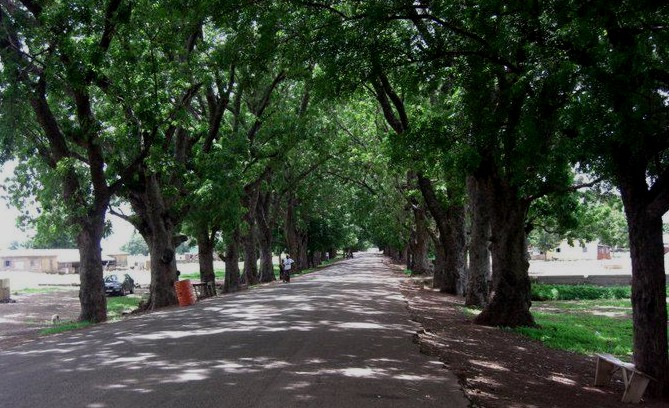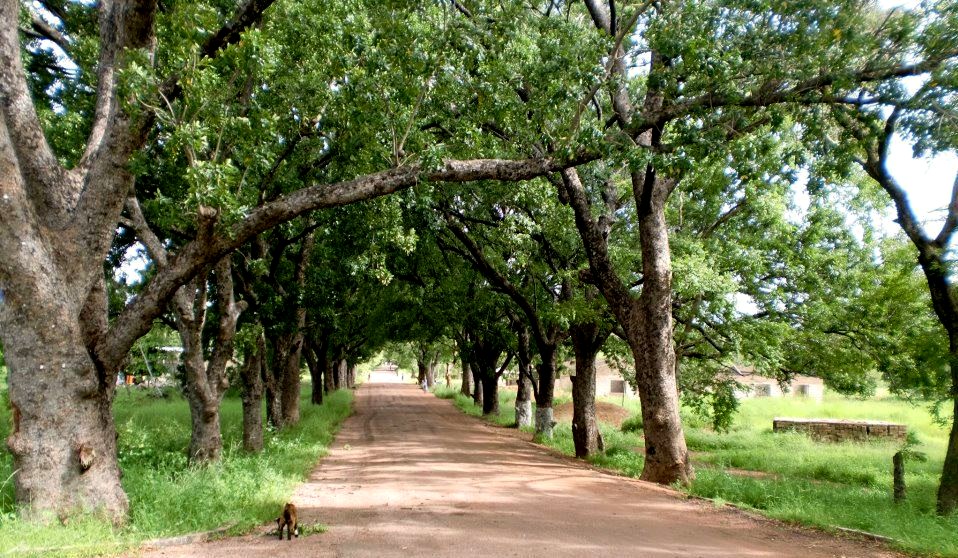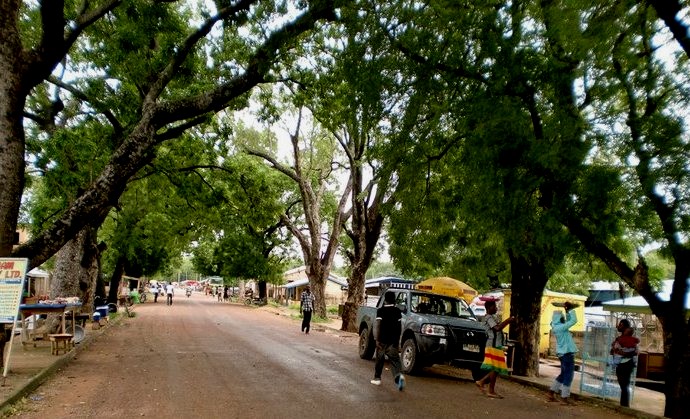
Ghanatta Ayaric
The Beautiful Canopies of Trees in Sandema
The visitor to Sandema, district capital of North Bulsa District, cannot fail to notice the big beautiful trees lining both sides of the main road from Sandema Technical Secondary School all the way through Sandema town to Sandema Old Primary School in Suwarinsa. Their canopies hang over the road in the same way the upper canopy layer of the tropical rainforest does the bottom layer.

The trees are among the first landmarks of Sandema, admired for their imposing stems, trunks, big branches and lush canopies. Heather Menezes, the Canadian lady who started the only children’s home in Bulsa, Horizons Children’s Centre in Sandema (www.horizonscentre.org), which has saved many destitute children from homelessness, hunger, disease and illiteracy and given them hope and prospects of a bright future, had this to say about Sandema in an interview with one of the editors of BULUK (Cf. read interview in Buluk No. 6).
“The first time I arrived in Sandema, I remember marveling at the beautiful canopy of trees that line up the main road. The bright green leaves contrasted with the red earth… everytime I return to Sandema I just love seeing those trees!”
Pictures of the trees posted on BMY’s Facebook wall have attracted some of the following positive comments:
“These trees are truly impressive..!”, “Beauty”, “Wow, I love these trees”.
That they exude a special aesthetic in themselves is doubtless. Their imposing appearance and
the sight of their greenery seem to tell in silence the story of our past. The chirping sounds of
birds and insects in their foliage and the shuffling sound of the wind blowing through their
leaves all go feed the imagination with the melody and rhythm of things and times of a past
that is scattered in fragments, a past whose pictures some of us wish we could see with own
eyes today, and not just in the firmament of the mind.
The importance of the trees for the environment is even more important. For an area like Bulsaland which is located on the border of the arid Sahel zone of West Africa and threatened, as a result, by desertification the trees are a blessing.
In a region where the sun scorches, especially in the dry season, the canopies of the trees provide shade for the many pedestrians and cyclists who use the road on a daily basis.
The trees hold mudslides in check and prevent soil erosion, functioning as a natural drainage system. In the rainy season, their big roots absorb the puddles that gather on the pothole-plagued road. Without this bountiful and environmentally friendly process taking place, the road is very muddy and dangerous to use – vehicles get stuck in the mud or skid off the road altogether. It is not accidental that in the parts of the whole feeder road where there are no big trees along the road, water gathers and lies stagnant for days after heavy rains and thereby hindering traffic.
Planted through forced labour during British colonial rule nearly a hundred years ago, the trees have stamped their presence in Sandema in the same the way the wild-growing shea, baobab trees and many other low bushes characteristic of the savanna grassland do in most parts of Bulsaland. They are a part of our history and living testimonies of efforts in environmental protection in Bulsaland, a factor that needs even more attention today given the various forms of damage to the environment in the form of soil erosion, bush fires and indiscriminate felling of trees, among others.
 |
|
Near the Market |
It has often been rumoured that the Bulsa North district administration has plans to have some of the trees felled, so as to broaden the main road. We truly appreciate a good and broader road. However, we wish to suggest that in the event of plans to upgrade the road becoming a reality, and we hope in the very near future, the portion of the road lined by the trees should be upgraded without the trees having to be cut down. If the reason behind a decision to widen the road is to prevent motor accidents, it is always possible to enforce a speed limit on the entire length of the approximate four kilometres of road where the trees stand. Such a traffic regulation will be appropriate considering the fact that this portion of the road has homes on both sides and goes through Sandema town and the main market.
It goes without saying that any decision, now or in future, to cut down some of the trees for whatever reason will be resisted by the people of Bulsa and friends of the Bulsa both in Ghana and abroad.